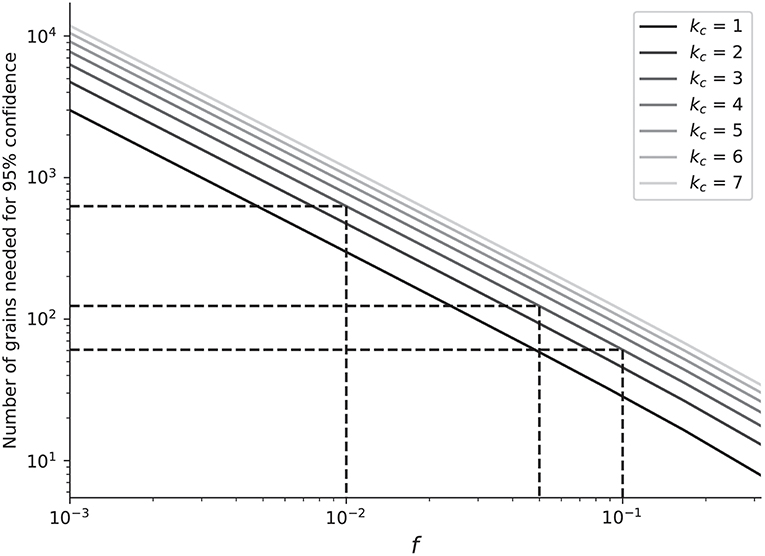Corrigendum: A Stratigraphic Approach to Inferring Depositional Ages From Detrital Geochronology Data
- 1Geoscience and Environmental Change Science Center, U.S. Geological Survey, Denver, CO, United States
- 2Department of Geology and Geological Engineering, Colorado School of Mines, Golden, CO, United States
- 3Geology, Geophysics, and Geochemistry Science Center, U.S. Geological Survey, Denver, CO, United States
A Corrigendum on
A Stratigraphic Approach to Inferring Depositional Ages From Detrital Geochronology Data
by Johnstone, S. A., Schwartz, T. M., and Holm-Denoma, C. S. (2019). Front. Earth Sci. 7:57. doi: 10.3389/feart.2019.00057
In the original article, there was a mistake in the published legend for Figures 2 and 3. An indexing error in the computation of the sum in Equation (7) resulted in the labels on values of kc being off by 1. What was originally labeled kc = 2 should have been labeled kc = 1, what was labeled kc = 3 should have been labeled kc = 2, and so on. The corrected figures and captions appear below.

Figure 2. Probabilities of dating enough grains from the youngest constituent to compute an MDA, given that kc grains are required to compute an MDA and that the grains belonging to the youngest age component constituents a fraction f of all dateable grains (Equation 7). The three panels show probability contours for kc = 1, 2, and 3.

Figure 3. How many grains should be dated to be 95% confident that we would date at least kc grains from the youngest source of grains? The solid lines provide this recommendation as a function of f, the fraction of dateable mineral grains from the youngest source. In practice, it is unlikely that this quantity can be known. The dashed lines represent specific recommendations for if f = 10, 5, and 1%. In 95% of cases where you date ~60, ~120, and ~630 grains, at least 3 grains will be dated from sources that contributed 10, 5, and 1% of all the dateable minerals.
There was also an error in the text of the original article related to the above-mentioned errors in the figure legends. This impacted the text in one place. A correction has been made to section 2.2, The Search for the Youngest Grain, paragraph 5, following Equation 7:
In cases where these youngest grains make up 1% or less of all dateable minerals, we would only expect to date three of the same grains 95% of the time if we were to date around 630 grains (Figures 2 and 3).
The authors apologize for this error and state that this does not change the scientific conclusions of the article in any way. The original article has been updated.
Keywords: detrital age, geochronology, detrital zircon, maximum depositional age, Bayesian statistics
Citation: Johnstone SA, Schwartz TM and Holm-Denoma CS (2019) Corrigendum: A Stratigraphic Approach to Inferring Depositional Ages From Detrital Geochronology Data. Front. Earth Sci. 7:161. doi: 10.3389/feart.2019.00161
Received: 03 June 2019; Accepted: 05 June 2019;
Published: 21 June 2019.
Edited and reviewed by: Brian W. Romans, Virginia Tech, United States
Copyright © 2019 Johnstone, Schwartz and Holm-Denoma. This is an open-access article distributed under the terms of the Creative Commons Attribution License (CC BY). The use, distribution or reproduction in other forums is permitted, provided the original author(s) and the copyright owner(s) are credited and that the original publication in this journal is cited, in accordance with accepted academic practice. No use, distribution or reproduction is permitted which does not comply with these terms.
*Correspondence: Samuel A. Johnstone, sjohnstone@usgs.gov
 Samuel A. Johnstone
Samuel A. Johnstone Theresa M. Schwartz
Theresa M. Schwartz Christopher S. Holm-Denoma
Christopher S. Holm-Denoma